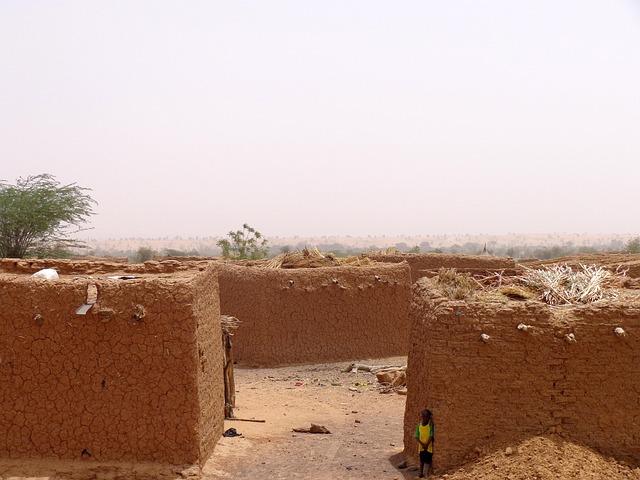In a notable move to bolster regional security and combat the growing threat of jihadist groups, Sahel countries have announced plans to form a joint anti-jihadist force. This initiative comes in response to a surge in violence that has destabilized nations across the Sahel region, where armed groups linked to al-Qaeda and ISIS have increasingly targeted both military and civilian populations.The collaborative effort aims to enhance intelligence sharing, streamline military operations, and create a unified front against extremist violence that has spread rapidly across borders. As thes nations grapple with the complexities of insurgency, the formation of this force underscores the urgent need for collective action to restore peace and security in a region long plagued by conflict and instability.
Sahel Countries unite to Combat Jihadist Threats Through Joint Military Initiative
The Sahel region, grappling with escalating jihadist violence, is set to take decisive action with the formation of a unified military force. This initiative is driven by the urgency to enhance collective security among the Sahel countries, which include Burkina Faso, Mali, and Niger. By pooling resources and coordinating efforts, these nations aim to confront the growing influence of extremist groups that threaten stability and safety in the region. The collaborative approach underscores a commitment to sharing intelligence, conducting joint operations, and fostering regional cooperation to dismantle terrorist networks operating within thier borders.
Key objectives of this joint military initiative are to:
- Enhance Operational Readiness: develop training programs and share best practices among the forces.
- Intensify counterterrorism Operations: Execute coordinated strikes against jihadist strongholds.
- Strengthen Intelligence Sharing: Establish effective communication channels for sharing critical facts.
- Engage Local Communities: Create strategies to counter radicalization and promote social cohesion.
In a recent meeting of defense ministers, countries emphasized the importance of regional solidarity and the need for international support to address the complex challenges posed by armed groups. The Sahel military alliance represents a pivotal shift in addressing security threats and reflects a broader strategy to restore peace and stability throughout the region.

Analyzing the Strategic Objectives of the Anti-Jihadist Force
The Sahel region, plagued by the rise of jihadist groups and escalating violence, necessitates a focused and coordinated response from the countries at risk. The strategic establishment of a joint anti-jihadist force signifies a pivotal shift in regional security dynamics. This force aims to enhance military cooperation and resource sharing among member states,enabling a more robust offensive against extremist threats. Key objectives include:
- Intelligence Sharing: Improve the collection and dissemination of intelligence across borders to increase situational awareness.
- Joint Operations: Conduct synchronized military campaigns to dismantle jihadist infrastructure and disrupt their operational capabilities.
- Training and Capacity Building: Provide training programs to local forces, improving their combat readiness and strategic effectiveness.
- Community Engagement: Focus on winning local support through progress initiatives to undercut the ideological appeal of jihadist narratives.
In pursuit of these objectives, the joint force will operate under a unified command structure that emphasizes collective decision-making and operational transparency. Resource allocation will be managed through shared responsibilities, ensuring that each nation contributes according to its capacity. A critical component of this strategy includes:
| Key Strategy | Expected Outcome |
|---|---|
| Cross-border coordination | Streamlined operations against mobile jihadist units |
| Community Engagement Initiatives | Reduction in local recruitment by extremist groups |
| Resource Pooling | Increased efficiency in operations and logistics |

Challenges Ahead: Coordinating Efforts Among Sahel Nations
The Sahel region faces a complex set of challenges that complicate the establishment of a unified force against jihadist threats. Among the foremost obstacles are differing national priorities and political instability which can hinder cohesive strategy implementation. Each country within the Sahel has its own set of security concerns,often influenced by local tribal dynamics,economic conditions,and historical grievances. thus, aligning these diverse interests into a singular military effort requires careful negotiation and diplomatic finesse. Key issues include:
- Trust Deficits: Deep-seated mistrust among nations may lead to reluctance in sharing intelligence and resources.
- Resource Limitations: Countries like Mali, Niger, and Burkina Faso grapple with inadequate funding and logistical capabilities.
- Geography: The vast and challenging terrain of the Sahel complicates coordinated military operations.
- Political Instability: Frequent changes in government and leadership may disrupt continuity in defense strategies.
Furthermore, the Sahel nations need to consider the role of external partners. While international support can provide much-needed resources and expertise, relying too heavily on foreign assistance raises concerns about sovereignty and long-term effectiveness. Balancing national sovereignty with collaborative defense efforts is essential to build a robust framework that supports sustainable peace and security.A possible way forward could involve:
| Strategy | Potential Benefits |
|---|---|
| Joint Military Training | Enhanced interoperability among forces. |
| Shared Intelligence Centers | Improved real-time response to threats. |
| Community Engagement Programs | Strengthened local support and trust. |

International Support and Funding: Key Factors for Success
The establishment of a joint anti-jihadist force among Sahel countries relies heavily on robust international support and consistent funding to ensure its effectiveness. Collaborative frameworks can enhance operational capabilities and strategic intelligence sharing among member states. Key international partners,including Western nations and regional organizations,are crucial in providing not only military aid but also logistical support and training programs. Coordination with entities such as the European Union and United Nations is essential for creating a unified approach that resonates with local dynamics while adhering to international standards.
Sustainable funding mechanisms will determine the longevity and impact of this joint force. The following aspects are integral to securing financial support:
- Global Donor Engagement: Attracting investments from international development agencies and NGOs fosters resource availability.
- Public-Private Partnerships: Mobilizing private sector funding can enhance operational budgets and contribute to community resilience initiatives.
- Multilateral Support Frameworks: Establishing a collective funding model that aggregates contributions from involved nations reinforces commitment and accountability.
| Fund Type | Potential Source | Expected Outcome |
|---|---|---|
| Military Aid | Western Governments | Enhanced Tactical Operations |
| Humanitarian Assistance | International NGOs | Community Stability |
| Development Grants | UN agencies | Long-term Resilience |

Local Perspectives: The Impact of Military Action on Communities
The establishment of a joint anti-jihadist force among Sahel countries marks a significant step in the region’s ongoing battle against militant extremism. Communities across the Sahel are witnessing the multifaceted effects of military action, which often ripple through daily life. While the intent is to bolster security and restore stability, the realities on the ground can be complex. Local populations sometimes find themselves caught in the crossfire, leading to increased displacement and disruption. Essential services, such as education and healthcare, are frequently impacted, with schools unable to operate safely and medical facilities strained under the pressure of conflict-induced crises.
Moreover,the social fabric of communities can be irrevocably altered by these military interventions. Increased military presence may initially be welcomed for the perceived security it provides, yet it can lead to long-term effects that foster distrust and resentment.The following issues frequently emerge in the aftermath of military actions:
- Displacement: Families are uprooted from their homes, leading to overcrowded camps and strained resources.
- Local Economies: Business activities decline as security operations disrupt trade and agricultural practices.
- community Relations: Tensions can rise between military forces and civilians, especially if operations result in civilian casualties.
To better understand the implications of these developments, the following table summarizes key community impacts in affected areas:
| Impact Area | Short-term Effects | Long-term Effects |
|---|---|---|
| Security | Increased military presence | Potential for increased local tensions |
| Economy | Disruption of trade | Decline in local entrepreneurship |
| Social Cohesion | Unifying against shared threats | Fracturing of community relationships |

Long-term Solutions: Addressing Root Causes of Extremism in the Sahel
To effectively combat extremism in the sahel, it is essential for governments to tackle the underlying issues that contribute to radicalization. A comprehensive approach must be adopted, addressing both social and economic grievances that foster discontent among the youth. Critical factors to focus on include:
- Economic opportunities: Job creation and sustainable livelihoods can considerably reduce recruitment into extremist groups.
- Education: Improving access to quality education nurtures critical thinking and civic engagement among young people.
- Political inclusion: Ensuring marginalized groups have a say in political processes helps mitigate feelings of disenfranchisement.
Furthermore, collaborative regional initiatives will be vital in promoting stability and countering extremism across borders.Joint efforts among Sahelian nations can enhance intelligence sharing and coordinated responses to threats. To measure progress, key indicators should be monitored, including:
| Indicator | Description |
|---|---|
| Employment Rate | Percentage of youth employed in sustainable jobs. |
| School Enrollment | Number of children enrolled in primary and secondary education. |
| Political Participation | Voter turnout rate among marginalized communities. |
Closing Remarks
the Sahel nations’ decision to form a joint anti-jihadist force marks a significant step in their ongoing battle against the rising threat of insurgency and extremism in the region. By pooling resources and coordinating military efforts, these countries aim to enhance their collective security and create a more stable environment for their citizens. Despite the challenges that lie ahead, this collaborative initiative reflects a commitment to unity and resilience in addressing the complexities of regional security. As this force takes shape, the international community will be closely watching to see how effectively the Sahel countries can confront the myriad of threats posed by jihadist groups while fostering peace and stability across their borders.







